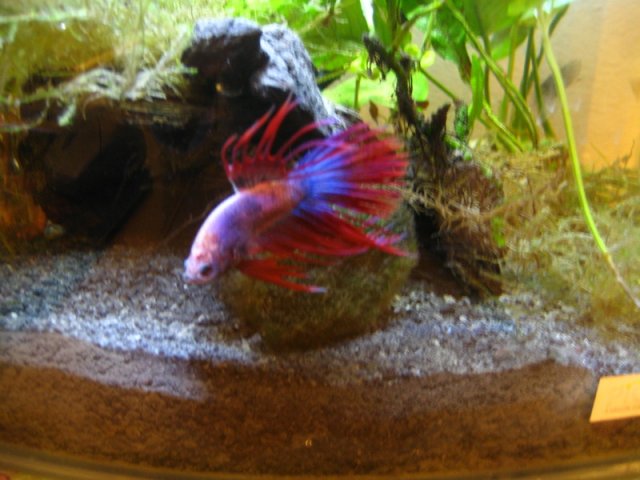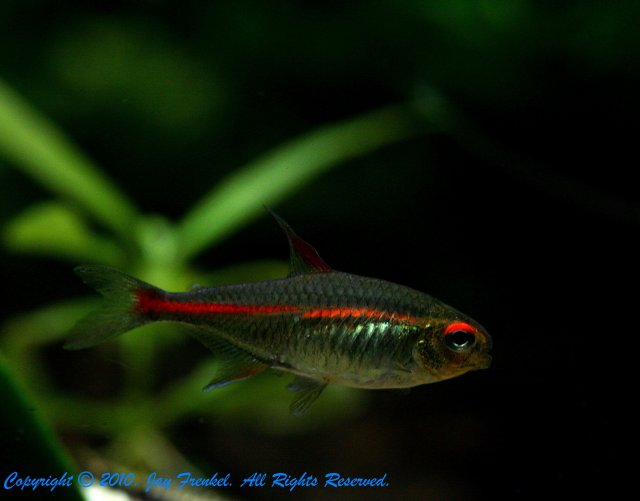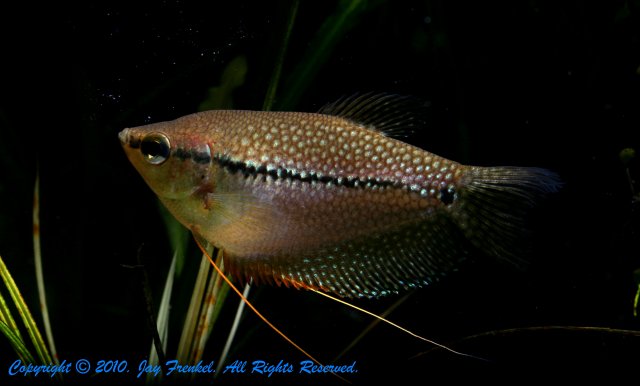Siamese Fighting Fish (Betta splendens)
Scientific Name: Betta splendens
Common Name: Siamese Fighting Fish, Betta
Care Level: easy
Size: 2.5 inches
pH Range: 6.0-7.5
Temperature Range: 24-28 degrees Celsius (76-80° F)
Origin: Mekong basin of Southeast Asia
Temperament: peaceful to moderately aggressive
Compatible Tankmates:
Tankmates are selected based on trial and error as it is not easy to determine how a
B. splendens will behave in community setups regardless of their genders. It is however best recommended they be kept with rasboras and tetras that will not be tempted to nip their fins such as glowlight tetras provided there is enough space to avoid the
B. splendens from harassing its tankmates due to the cramped quarters. Most bottom dwellers such as corydoras often work.
Specimens with flamboyant fins such as gouramis and guppies are best avoided as they may be marked by
B. splendens as rivals and may only end up being constantly harassed.
Diet:
B. splendens are carnivorous by nature relishing insects and small fish in the wild. They can be seen lurking around floating vegetation in shallow ditches while looking for their prey. In captivity, most
B. splendens tend to be fussy over foods although meaty foods such as bloodworms are often accepted but do not stick to only one food as a staple as these fish are rather prone to bloat caused by excessive proteins since proteins are not easily digested even by carnivorous specimens themselves. Vegetable matter must also be added to their diet so they can gather fiber that will allow them to excrete wastes without risk of constipation or bloat, both disorders that may prove fatal to the fish's health.
Tank Size for Adult: 2.5g.
Narrative:
The Siamese fighting fish (
Betta splendens), also known as the "betta fish" or just "betta", is one of the most popular species of freshwater aquarium fish however these are also the ones often largely misinterpreted in terms how they are cared for by their owners.. It is native to the Mekong river basin in Southeast Asia and called pla-kad or pla-kat ("Biting Fish") in its native Thailand.
B. splendens usually grow to an overall length of about 6.0 cm (~ 2.3 in), though some varieties reach 8.0 cm (3.5 in.) in length. In recent years breeders have been able to create "Giant Bettas" that exceed 8.0 cm (3.5 in.) due to the manipulation of a mutant gene. Although bettas are known for their brilliant colors and large, flowing fins, the natural coloration of
B. splendens is a dull green and brown, and the fins of wild specimens are relatively short. However, brilliantly colored and longer finned varieties, such as veiltail, delta, superdelta, and halfmoon have been developed through selective breeding.
The betta is a member of the Gourami family (family
Osphronemidae) of order
Perciformes, but was formerly classified among the Anabantidae. Although there are nearly 50 other types of bettas,
B. splendens is the most popular species among aquarium hobbyists, particularly in the United States.
B. splendens are carnivorous by nature relishing insects and small fish in the wild. They can be seen lurking around floating vegetation in shallow ditches while looking for their prey. In captivity, most
B. splendens tend to be fussy over foods although meaty foods such as bloodworms are often accepted but do not stick to only one food as a staple as these fish are rather prone to bloat caused by excessive proteins since proteins are not easily digested even by carnivorous specimens themselves. Vegetable matter must also be added to their diet so they can gather fiber that will allow them to excrete wastes without risk of constipation or bloat, both disorders that may prove fatal to the fish's health.
Tankmates are selected based on trial and error as it is not easy to determine how a
B. splendens will behave in community setups regardless of their genders. It is however best recommended they be kept with rasboras and tetras that will not be tempted to nip their fins such as glowlight tetras provided there is enough space to avoid the
B. splendens from harassing its tankmates due to the cramped quarters. Most bottom dwellers such as corydoras often work.
Specimens with flamboyant fins such as gouramis and guppies are best avoided as they may be marked by
B. splendens as rivals and may only end up being constantly harassed.
Natural Habitat and Housing
An important thing to know when housing a
B. splendens is that most metals are lethal, and never should metal decorations be used unless they are marked for this purpose. Copper is especially dangerous. Nonetheless, to keep an individual
B. splendens, a minimum tank size of 3 U.S. gallons at least is recommended, if it will be kept in a warm room. Decorations can provide hiding places, especially important when two males are housed in a divided tank, or when the betta is living in a community tank. Every decoration must be free of rough areas or sharp points which can damage the delicate fins of the betta. For this reason, silk rather than plastic plants are recommended. Live plants will improve the water quality. Also, since the betta obtains oxygen from the air, the tank must not be covered with an air-tight lid and the betta must be able to easily reach the surface. (Note that some bettas enjoy leaping out of tanks, so a breathable lid is highly recommended.) If the betta has no access to air, it will suffocate.
In Canada and the United States, the Betta is sometimes sold in a vase with a plant, with the erroneous claim that the fish can feed on the roots of the plant and that it can survive without changing the water. This is dangerous for the betta in two ways. First, the betta has a labyrinth organ which allows it to take in oxygen from the surface air, similar to the human lung. If the betta can not reach the surface of the water, which can be the case if a plant's roots are covering the surface, the betta will suffocate in a matter of hours. When kept in a small container such as a vase, the fish need frequent water changes, and the container must be kept in a warm room. A larger tank with a heater will provide better living conditions. Wherever the fish is kept, water must be treated with an appropriate water conditioner before use.
There is a stereotype that in the wild, bettas live in tiny muddy pools, and therefore that it is acceptable to keep them in small tanks, but bowls are usually too small. In reality, bettas live in vast paddies, the puddle myth originating from the fact that during the dry season, the paddies can dry out into small patches of water. It is not a natural state of affairs by any means, and in the wild, fish trapped in such puddles are likely to die in a short period of time when they dry out.
According to Horst Link who wrote a book specially for bettas, "In my opinion, the natural distribution range is very much smaller than had been supposed until now and is, in fact, restricted to central, western, and northern Thailand...
Betta splendens lives in paddy fields and associated ditches, in marshes and flooded grass pits and in the klongs (canals) of the residential parts of towns and villages. At different times of the year, they may be very numerous."
These fish are largely misunderstood in where they exactly originated. The view that
B. splendens often live in mudholes and therefore can be kept in such conditions is not really tenable. The fish will exhibit their full finery in a well-established, balanced aquarium and it is only under such conditions that their keeper will be able to appreciate their beauty at its best.
To maximize the lifespan of the fish and ensure their well being, they should always be kept in appropriate sized tanks. Bettas ideally should be kept in a filtered tank 10 gallons or more and treated like any other freshwater tank fish. Although these conditions are ideal, with proper care and filtration, a betta can be happily kept in a smaller tank.
Klong
Paddy field
Other good links:
http://www.ikanpemburu.com/html/field/pontian.htm
http://www.ikanpemburu.com/html/fiel...itam_last1.htm
http://www.ikanpemburu.com/html/field/Thailand2.htm
Sexing and Breeding
Male bettas are often known to have rather long fins. While this is in fact a common sight, wild male bettas have shorter fins and are even drabber than what they are now. Their short fins allow them to swim across the currents whereas long finned specimens often have problems swimming due to their fin structure. In short, it is not always correct to assume that the fins indicate their sexes. According to Bcaquatics.com, under the head area, where the gills meet, males will have an extra skin that forms under the fish. Females are distinguished by their white dot or the egg tube found between their ventral fins.
References:
Link, Horst (1991). Labyrinth Fish: The Bubble Nest Builders, published by Tetra.
http://en.wikipedia.org/
http://betta.tasarin.net/aquarium.php
http://bcaquatics.com/








